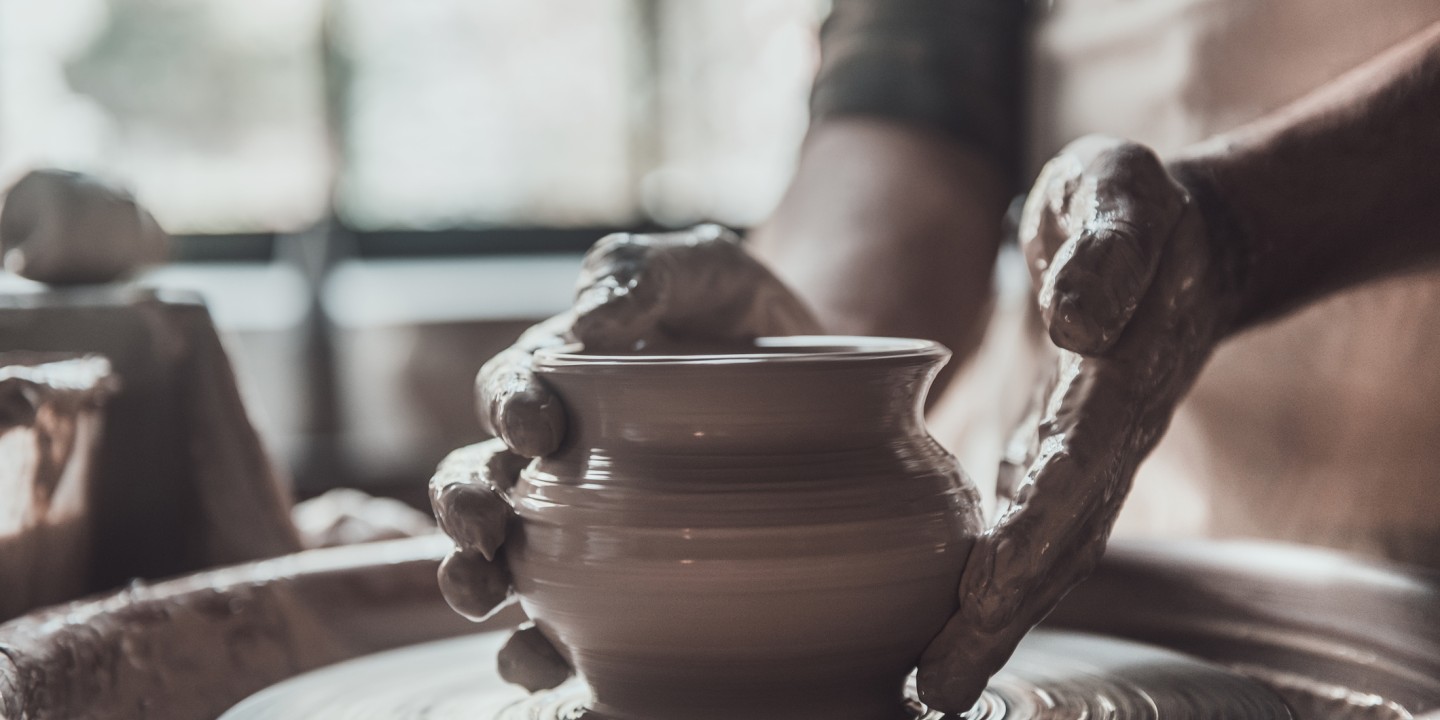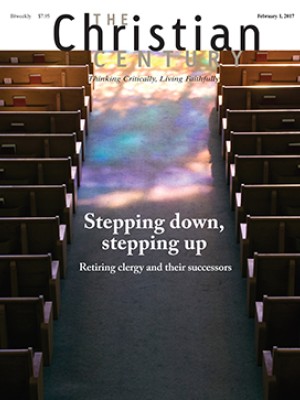Christ the artist, we the portfolio
We are God’s artifacts—beautiful, incomplete, and mysterious.

I inherited an impressive sequence of art commissions from my predecessor at St. Martin’s. He not only conceived a number of projects but also gathered an expert panel of art consultants and found donors for a remarkable east window, two altars, a processional cross, and much more.
I come from the strand of the church that tends to assume such things should be sold and the money given to the poor. So I’ve had to listen and learn about faith, art, and mission. I began with the words of Jeremiah: “The vessel he was making of clay was spoiled in the potter’s hand, and he reworked it into another vessel.” Here I found the essence of art and the essence of Christianity in one sentence. It’s the essence of art because art is the convergence of form, material, and ideas. The artist whom Jeremiah went to see is taking the material of clay, the form of the vessel, and the idea of God’s relationship with Israel.
Read our latest issue or browse back issues.
Like most artists, the potter finds that the first attempt wasn’t a huge success, and the original plan is research that leads to an improved outcome next time round. That’s how art works. Art doesn’t fundamentally lie in the creation of the material. The material is a given—to be understood, practiced upon, cherished, for sure, but not created. Art lies in the recreation of that material in a new form, according to a governing idea or set of ideas.
That’s what makes Jeremiah’s words the essence of Christianity. Christianity is not about imagining something perfect called creation and straining to get ourselves back to that ideal state; it’s about taking the material of humankind and the surrounding world and universe, exploring the form of a relationship between God and us, and contemplating the governing idea that God the artist will go to any lengths to restore that relationship. In the words of Athanasius, “When a portrait . . . becomes obliterated through external stains . . . the subject of the portrait has to come and sit for it again, and then the likeness is re-drawn on the same material.” This is the story of Christianity, that God does not throw us away as flawed but reworks us into something more beautiful.
The agent of this remarkable artistic project is Jesus. We are his portfolio. Vincent van Gogh wrote: “Christ lived serenely, as a greater artist, despising marble and clay as well as colour, working in living flesh . . . this matchless artist made neither statues nor pictures . . . [but] loudly proclaimed that he made . . . living people, immortals.” In other words, Jesus heals the diseased and comforts the distressed, and makes them icons of the beauty of God.
Paul says that Jesus is “the image of the invisible God”: not that God the artist created Jesus the material and form, but that Jesus is the ultimate depiction of God’s way of turning us from formless material into works of glorious and eternal art. This is justification and is the work of Jesus. Continuing to work with the material that we are and redeeming the form according to the idea or pattern of God’s grace is called sanctification and is the work of the Holy Spirit. Augustine, describing our resurrected bodies, says that an artist who makes an unsatisfactory statue need not throw it away but simply moisten the material and remix it. He calls God the almighty artist who removes our shortcomings and makes us beautiful like never before.
And that brings us to the art of congregational life. The gospel is not about striving to return to some kind of unblemished perfection. It’s about trusting the Trinity to bring us into renewed relationship with God, with one another, and with ourselves and allowing Christ and the Holy Spirit to transform the poverty of our nature by the riches of God’s grace. The art of congregational life is about starting with who we are and what life has given and done to us, and discovering together, through the imagination of God, a form we would never otherwise have assumed.
Works of art remind us that we are God’s artifacts—sometimes beautiful, challenging, profound, incomplete, delicate, or mysterious. As we return again and again to magnificent art works, which stretch our understanding of material, form, and idea, we turn even more inspired to one another, seeing new treasures, absorbing texture, and rewarding relationship.
What is a church except a community in which we see the artist at work refining, caressing, transforming, remolding, and restoring? Artworks invite, inspire, and provoke us to allow the Holy Spirit to make us into something good and beautiful and true. Which of us can say that we are not vessels that are broken in the potter’s hands? Which of us cannot say, looking at the idea of a church as a community in which people are being transformed by the artistry of God, that our deepest longing is to be remolded by that potter into something even more beautiful?
A version of this article appears in the February 1 print edition under the title “We are God’s artwork.”






